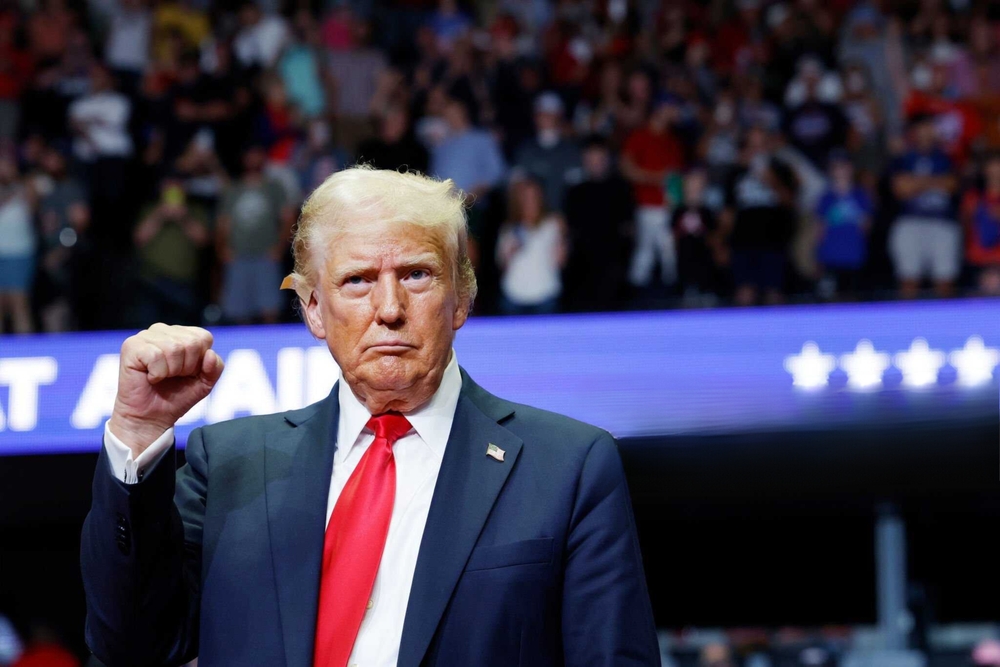President Donald Trump’s wildfire relief plan offers aid that may alter the landscape of Los Angeles’s rebuilding efforts, but how this initiative will unfold remains to be seen.
Trump’s Proposed Relief Plan
President Donald Trump announced a wildfire relief plan to provide financial bonuses ranging from ten to fifteen percent on homes destroyed in the recent Los Angeles wildfires. The proposal highlights efforts to assist victims with tremendous losses, stating, “They deserve it because you know what: It’s not their fault that this fire took place.” Trump emphasized that homeowners bear no responsibility for the fires, urging them to receive additional support during rebuilding.
When you’re trying to figure out WTF is going on with CA’s special session, how much financial aid is going towards L.A. wildfire victims, and what’s going on with $$$ towards combating Trump’s policies CA—and you realize, all you have to do is follow @ZavalaA…this is your mood pic.twitter.com/5kVqBddRiO
— Brody Wayne Fernandez (@BrodyWayneMedia) January 16, 2025
Trump’s plan also includes advocating for less restrictive building standards to facilitate faster reconstruction. He proposed increasing ceiling heights and allowing for larger lot sizes. Moreover, he introduced a strategy to waive federal permitting requirements, encouraging local governments to do the same. This approach met resistance, particularly from Los Angeles Mayor Karen Bass, sparking a debate over using emergency powers to dismantle bureaucratic roadblocks in rebuilding efforts.
BREAKING: House Minority Leader Hakeem Jeffries brings his foot down hard and bluntly rejects Donald Trump's scheme to tie wildfire aid to California to the debt ceiling hike — refusing to play politics with people's lives.
This is what real moral clarity sounds like…
"It’s a… pic.twitter.com/xre8XX57Yw
— Occupy Democrats (@OccupyDemocrats) January 23, 2025
Aid and Controversy
During his presidential campaign, Trump made waves by threatening to withhold disaster aid from California unless Governor Gavin Newsom signed a document to reroute water supplies. Despite experts debunking these assertions, Trump held firm in his claim that California’s water policies hindered firefighting capabilities. The Trump administration has frequently criticized state management and hinted at reforms to shift fiscal responsibility onto states.
Trump’s camp indicated plans to possibly impose conditions on federal aid money allocated for fire victims, with figures like Speaker Mike Johnson echoing similar sentiments. However, according to disaster experts, these attempts to delay or alter aid delivery are unlikely to succeed, given the established recovery processes of the Federal Emergency Management Agency (FEMA). FEMA has assured the public of sufficient funding to address immediate recovery requirements, although more considerable rebuilding costs necessitate state reimbursements.
Federal and State Dynamics
Despite Trump’s bold articulation of his relief plan, the path to long-term recovery in California remains reliant on both federal and state collaboration—a relationship marked by tension. In contrast to the Southern state’s hurricane repair efforts, wildfires represent a comparatively smaller segment of FEMA’s disaster expenditure. Nonetheless, Trump’s proposals and the frictions with state governance mark a significant phase in Los Angeles’s restoration journey.
Congress holds a substantial role in determining California’s long-term recovery funding. Although debates over HUD funding and aid conditions persist, experts assert that assistance will be granted to mitigate the risk of setting precedents for future federal disaster support nationwide. Meanwhile, as Trump plans visits to both storm-torn North Carolina and wildfire-impaired California, the dialogues continue to evolve amid significant state-level disputes.
Sources:
https://truthout.org/articles/heres-what-trump-can-and-cant-do-to-disrupt-los-angeles-wildfire-aid/

